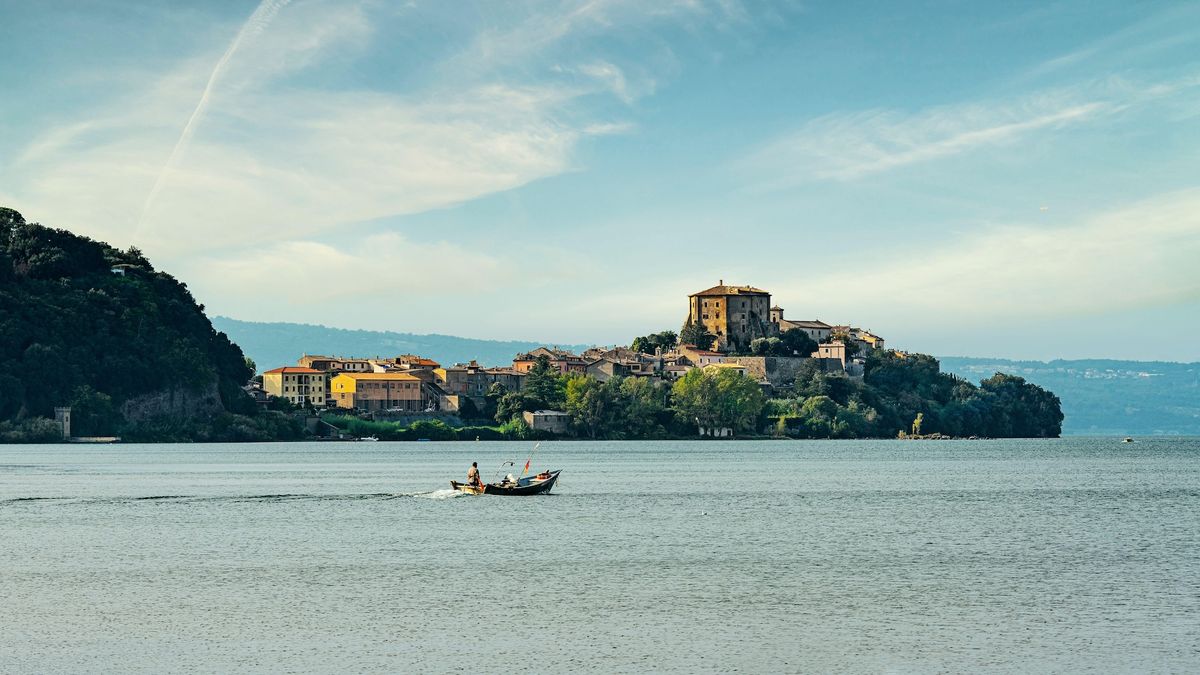A 3,000-year-old clay figurine thought to portray an ancient goddess has been discovered in a volcanic lake in central Italy.
Archaeologists think the object was a votive figurine that was probably crafted so prayers could be directed to it. Its features are only crudely finished, but the figurine still bears the handprints of whoever made it, as well as the impression of a fabric pattern that suggests it was originally clothed in some sort of garment.
Government archaeologists for the Etruria region and police divers made the discovery last month at Lake Bolsena, about 50 miles (80 kilometers) northwest of Rome.
The east side of the lake is the location of the submerged Gran Carro archaeological site, which is thought to be the remains of an Iron Age village built in the 10th or ninth century B.C. and which later sank underwater.
Related: Ancient sanctuary used by Roman soldiers nearly 2,000 years ago found in the Netherlands
The clay figurine, which measures about 6 inches (15 centimeters) long, was found in the ruins of a residence at the sunken site, and archaeologists think it was related to a domestic ritual. Similar rituals have been documented in the region in later periods, suggesting such practices are very ancient, and similar figurines have been found in Iron Age graves, according to a translated Facebook post.
“This is an exceptional discovery, one of a kind,” the archaeologists said in the post. “It shows aspects of daily life in the early Iron Age, of which little is known in southern Etruria.”
Submerged village
Geologists have established that Lake Bolsena formed between 600,000 and 200,000 years ago during eruptions of the underlying Vulsini volcano. Roman records indicate the volcano was active as recently as 104 B.C., and scientists now think the ancient village was submerged when the eastern shore sank amid seismic activity.
According to archaeologists, the sunken village containing the newfound figurine was probably built by people from the Villanovan culture, an early stage of the Etruscan civilization that preceded the founding of Rome. The thousands of artifacts found there since the 1960s include pieces of wood, household objects, jewelry and pieces of pottery, and studies of the village’s layout suggest how the Iron Age society there was organized.
The Gran Carro site is now being developed under the National Recovery and Resilience Plan, which includes the creation of an underwater path for visitors, according to the Facebook post.
One of the site’s most mysterious features is the Aiola, a large pile of submerged stones that archaeologists now think was a structure built beside a geothermal spring. Recent discoveries in the San Casciano dei Bagni region, a few miles to the north, indicate such hot springs were sacred to the later Etruscans and Romans.
Explorations in 1991 showed the Aiola structure still contained fragments of wooden poles and pottery from the Iron Age, and research in 2020 showed that the stones covered an earthen mound. Coins minted during the rule of the Roman emperor Constantine the Great (who lived circa 272 to 337) have also been found at the site, indicating it was used even in late Roman times.














/https://tf-cmsv2-smithsonianmag-media.s3.amazonaws.com/filer_public/d1/82/d18228f6-d319-4525-bb18-78b829f0791f/mammalevolution_web.jpg)






Discussion about this post